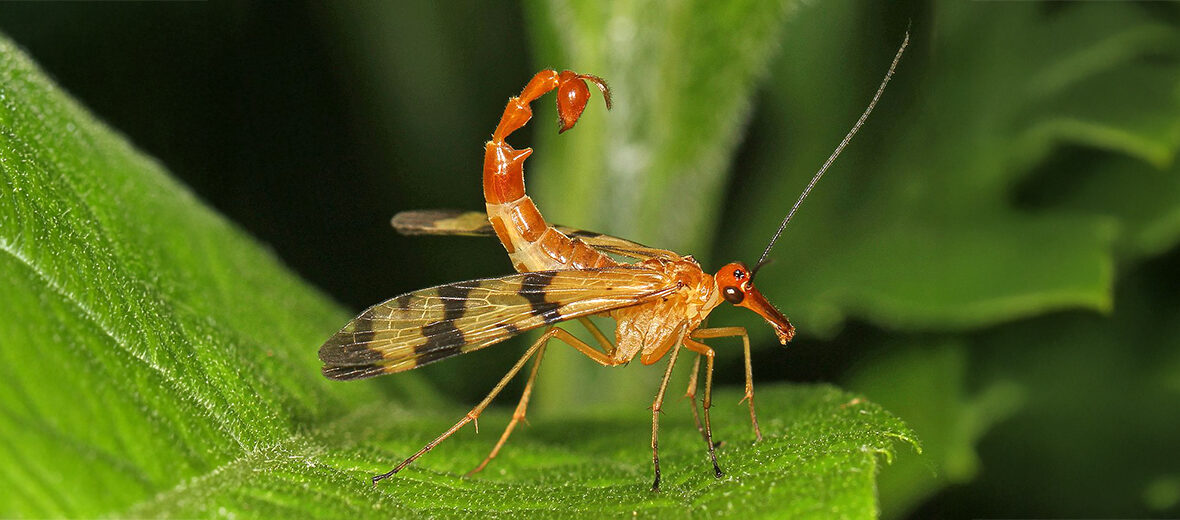
There are approximately 600 species, 34 genera, in 9 families of scorpionfly the world over. But what do they do? Do they sting? Are they a threat? With the male’s raised and curled tail, they resemble a scorpion, but are they as ominous as the famed arachnids? These insects are not evaluated by the IUCN as their populations are vast and stable worldwide. Read more to find out about these fascinating critters.
First the Stats…
Scientific name: Mecoptera
Length: Up to 1.4 inches
Lifespan: Up to 1 year
Now on to the Facts!
1.) These insects are closely related to fleas and distantly related to flies.
2.) Prehistoric scorpionflies might have played an important role in pollinating the now extinct species of gymnosperms before the evolution of other insect pollinators like bees.
3.) Adults are mostly attracted to carrion (dead animals) and humans.
4.) There are some species of scorpionflies that are the first to arrive at a dead body, indicating how fresh the death is/was.
5.) Carl Linnaeus was among the first to describe these critters in 1758.
But wait, there’s more on the scorpionfly!
6.) These insects date back to the Upper Permian age. Fossil Mecoptera become abundant and diverse during the Cretaceous Period.
7.) Scorpionflies mainly inhabit moist, tropical environments, although a few species are found in semi-desert habitats.
Did you know…?
Some species of scorpionflies raid spider webs to feed on trapped insects and will even feast on the spiders themselves.
8.) Adult flies are primarily scavengers, feeding on decaying vegetation and the soft bodies of dead invertebrates.
9.) During the courting ritual, the male might provide an edible gift like a dead insect or a brown salivary secretion to the female to woo her into mating with him.
10.) While the female inspects the gift, he locates her genitalia with his. If she stays to eat the prey, his genitalia attaches to hers, and the female lowers herself into an upside-down hanging position, and eats the prey while mating.
But wait, there’s still more on the scorpionfly!
11.) Females lay up to 10 eggs per clutch and the eggs hatch once the moisture levels reach a specific point.
12.) Forensic entomology makes use of the scorpionfly’s habit of feeding on human corpses. In regions where the family Panorpidae occurs, like the eastern United States, these scorpionflies are often the first insects to arrive at a human body, and stay on the corpse for 1 – 2 days. The presence of scorpionflies therefor indicates that the body must be fresh.
13.) And last but not least, the answer to your question, “Do they sting?” No. The curved tail end of the male is actually part of its genitalia. These critters are harmless to humans and animals. Unless you’re already dead, you have nothing to worry about; and if you’re dead, you again have nothing to worry about.
Now a Short Scorpionfly Video!
Be sure to share & comment below! Also, check out the Critter Science YouTube channel. Videos added regularly!
Want to suggest a critter for me to write about? Let me know here.
Some source material acquired from: Wikipedia
Photo credit: Judy Gallagher




